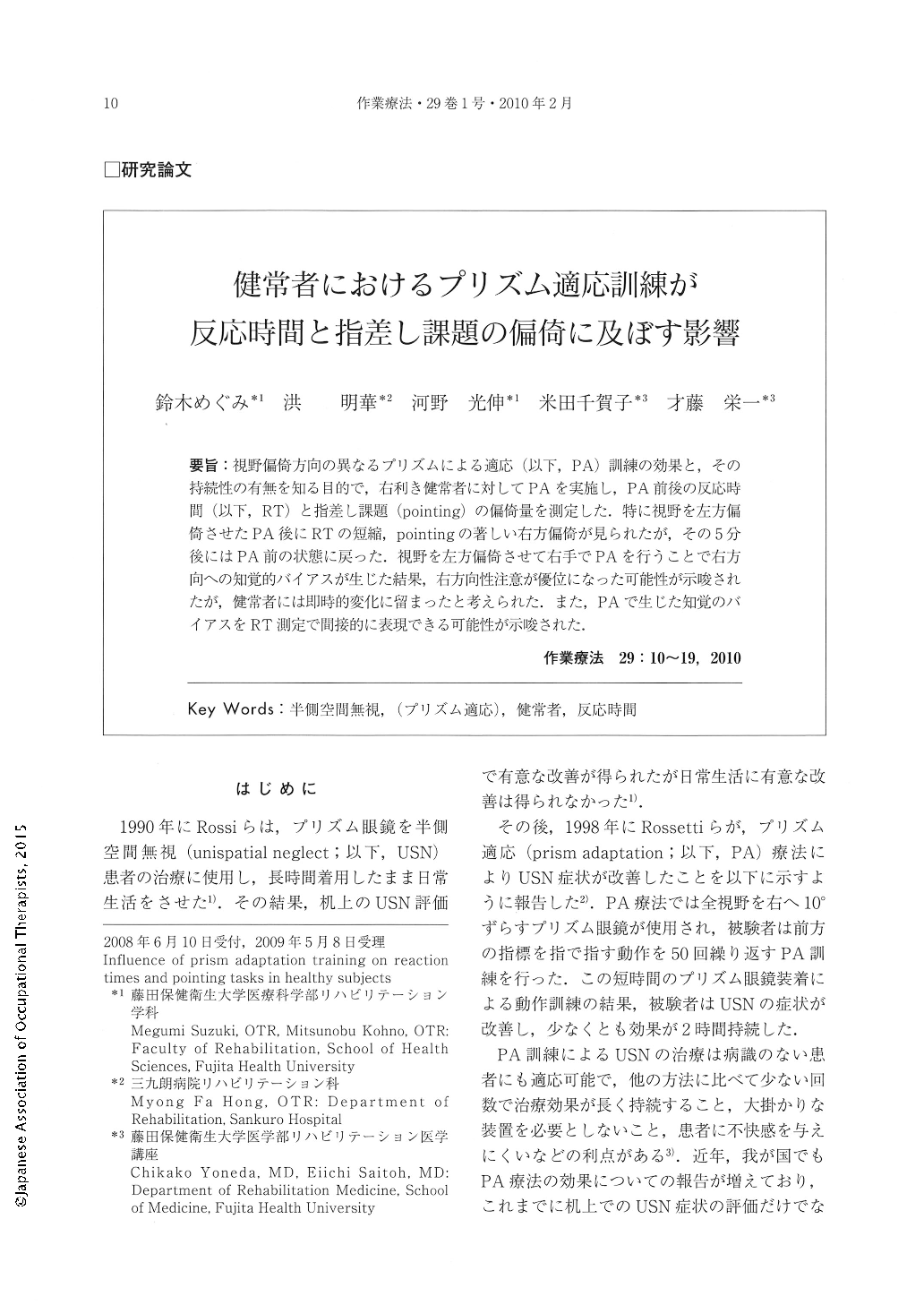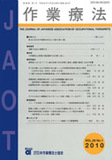Japanese
English
- 販売していません
- Abstract 文献概要
- 1ページ目 Look Inside
- 参考文献 Reference
要旨:視野偏倚方向の異なるプリズムによる適応(以下,PA)訓練の効果と,その持続性の有無を知る目的で,右利き健常者に対してPAを実施し,PA前後の反応時間(以下,RT)と指差し課題(pointing)の偏倚量を測定した.特に視野を左方偏倚させたPA後にRTの短縮,pointingの著しい右方偏倚が見られたが,その5分後にはPA前の状態に戻った.視野を左方偏倚させて右手でPAを行うことで右方向への知覚的バイアスが生じた結果,右方向性注意が優位になった可能性が示唆されたが,健常者には即時的変化に留まったと考えられた.また,PAで生じた知覚のバイアスをRT測定で間接的に表現できる可能性が示唆された.
We examined the influence of prism glasses on visuospatial cognition in 77 healthy subjects by measuring reaction times (RT) and administering a pointing task before and after prism adaptation training (PA). The control group was measured without prismatic lenses, and the experimental group wore two different types of glasses: one with rightward shifting prismatic lenses and the other with leftward shifting lenses.
According to the results, RT after PA with leftward shifting prismatic lenses was significantly faster than before PA. The pointing task after PA with leftward shifting prismatic lenses produced significant deviations to the right of the target compared to before PA. 5 minutes after PA, prolonged reaction times were observed and deviations in the pointing task disappeared under all conditions in this study.
This study suggests that wearing leftward shifting prismatic lenses and conducting PA training with the right hand produces rightward perceptual bias and rightward directional attention. However, it also indicates that these phenomena were temporary conditions in the healthy subjects. Finally, the results show that perceptual bias conducted by PA could be measured by RT.

Copyright © 2010, Japanese Association of Occupational Therapists. All rights reserved.


